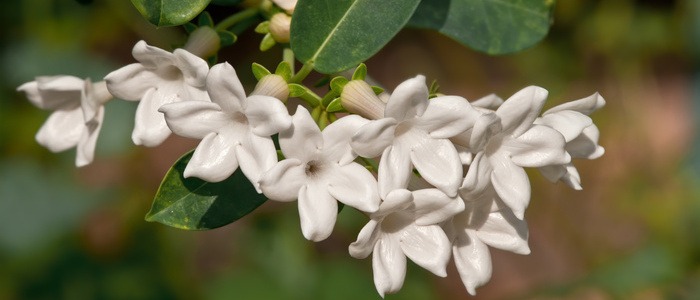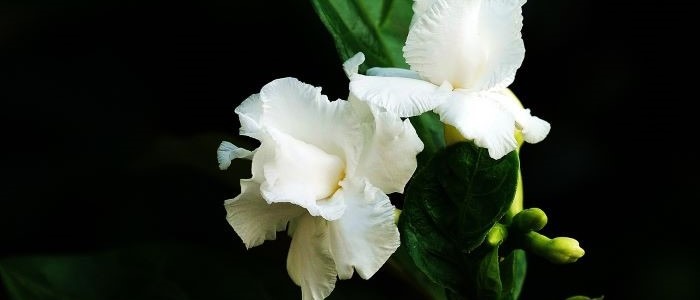Ever heard of the white anthurium plant? Well, you must have considering the flowers of this plant are the longest-lasting on this planet. Which simply put means that the beautiful dazzling flowers of this plant will keep brightening up your home for a long, really, really long time.
Another great reason to have this plant at your home is that the flowers represent abundance and happiness. But did you know that the heart-shaped flowers of these plants are actually not flowers? This easy-care and durable houseplant has some appealing white, purple, pink, and red leaves that originate from the fleshy spike from where the tiny flowers actually grow.
The white anthurium is a kind of air plant that has originated from a warm tropical climate. This makes this houseplant extremely easy to care for and durable. That being said, let’s now dive deep into knowing more about this plant in case you were thinking of getting one for your home. But before we do that, here’s an important thing to remember, make sure you never ingest this plant as they are poisonous. So in case you have kids or pets at home, you need to be extra careful with this plant.

White Anthurium Frequently Asked Questions
How often should I water my white anthurium?
You should water your white anthurium plant once a week, allowing the soil to dry out slightly between waterings. Overwatering can lead to root rot and other issues, so it's important to monitor the soil moisture levels and adjust your watering schedule accordingly
Are anthurium plants easy to care for?
Overall, anthurium plants are fairly easy to care for as long as you provide them with the right conditions. In addition to proper watering, they also need to be kept in a warm, humid environment and fertilized regularly. If you notice any signs of pests or disease, it's important to address them promptly to prevent further damage.
Taking Care of Your White Anthurium Plant
Below are mentioned some instructions you need to keep in mind when taking care of the white anthurium. You will be able to understand how much light, temperature, fertilizer, and humidity your plant will require for its healthy growth.
- Temperature: This plant thrives well in warm temperatures, which should be anywhere between 70 to 90 degrees F. when growing indoors, make sure the temperature doesn’t fall below 50 degrees F, in which case the plant will stop growing. And if the temperature becomes too high, the flowers will wilt.
- Water: You need to keep checking the soil for dryness when it comes to the white anthurium. If the soil feels dry when touched, then it’s time to water the plant. But be careful not to overwater as well as these roots can rot easily. Watering regularly is only necessary during its growing period.
. - Fertilizer: During the summer and spring seasons which is its growing season, it is important to feed the plants with liquid fertilizer of 1/4th strength. Remember to not use too much fertilizer and use a fertilizer with a high phosphorus content.
. - Humidity: White Anthuriums need humidity to thrive well except for the flowering variety, which is capable of tolerating more dryness. Make sure to keep the humidity level at your home to a minimum of 60%. You can also use a tray filled with water and pebbles and group your indoor plants together to increase humidity.
- Light: A flowering anthurium requires indirect bright light. Keep in mind if the light is too low, then the plant will grow slowly and produce small and fewer flowers. On the other hand, if the sunlight is direct, then flowers and leaves might end up getting scorched.
Propagating The White Anthurium Plant
This plant doesn’t produce any fruits, which makes it difficult to gather and then grow the seeds. This is why using cuttings to propagate is a much more reliable and easy way to get your new plant. Below we have talked about both these methods so just read on:
Propagating Through Seeds
The bright and beautiful flowers of this plant produce pollen which you can easily collect with the help of a paintbrush. All you need to do now is spread it to the other flowers. It generally takes almost a year for the plant to produce seed-bearing fruits. Thereafter follow these steps to propagate the white anthurium:
- When the fruits are about to fall off, collect and squeeze the seeds out of them.
. - Now, you just need to plant these seeds along with the remaining parts of the fruit in moist peat moss or vermiculite.
. - Lightly cover the seeds and then set the tray or the pot on a seed heating mat.
- Keep misting lightly and cover with some plastic to ensure the seeds remain moist and warm.
- The seeds are going to germinate within the next 14 days. At this point, keep them in a brightly lit and warm location.
- Eventually, transfer them to larger pots and keep watering regularly to make sure the humidity remains high.
Propagating The Anthurium Through Cuttings
- Gather a cutting, preferably in early summer or spring.
- Make sure the cutting has a minimum of two nodes, dust this end with some fungicide, and then put it in a potting mix.
- After you are done watering, put the pot with the cutting in a plastic bag
- Place this plastic bag in a warm and bright location. Make sure the potting mix remains moist and not waterlogged
- It will take around 5 weeks for the cutting to have new growth
- Repot them in a potting mix of perlite, bark, and peat moss
- Water whenever the soil feels dry and keeps misting regularly
- Ensure that the pot doesn’t stay in water for long as this will make the roots rot
Pruning the White Anthurium Plant
pruning this plant is necessary to maintain the plant’s balance and shape. If you don’t remove the older growth from time to time, it might lead to the stem getting overburdened and the plant having stunted growth.
While pruning, makes sure you start from the very top. Cut off the dead or wilted blossoms and remove any dead or discolored leaves. You can also get rid of any wayward leaves to enhance the appearance of your plant. Removing suckers is also crucial for the healthy growth of the plant, as now the plant can focus its energy on the blossoms. Try trimming the suckers when their size is small instead of when they are large, as this might end up damaging the base.
Lastly, one thing to always keep in mind is to use good quality sharp tools when pruning the white anthurium. Dull blades might end up crushing or tearing the stems, and this will make the plant prone to pests and diseases. To prevent any form of bacterial infection, wipe your cutting tools before each cut using a bleach solution or simply rubbing with alcohol.
Common Problems When Growing the White Anthurium Plant
One common pest that can be a problem when growing the White Anthurium Plant is the aphid. These small insects can infest the plant, causing damage to the leaves and flowers. Another problem that may arise is root rot, which occurs when the plant is overwatered or the soil does not drain well. This can lead to yellowing leaves and stunted growth. It is important to regularly inspect the plant for signs of pests and maintain proper watering practices to ensure the health of the White Anthurium Plant.
Additionally, mealybugs are another common pest that can affect the White Anthurium Plant. These tiny, white, cotton-like insects can be found on the undersides of leaves and stems, sucking sap from the plant and causing it to weaken. To combat mealybugs, it is recommended to use an insecticidal soap or neem oil spray. Furthermore, temperature fluctuations can also pose a problem for the White Anthurium Plant. Drastic changes in temperature can cause the leaves to wilt or develop brown spots.
Therefore, it is important to keep the plant in a stable environment, away from drafts or extreme temperatures. Additionally, overwatering can also lead to issues with the White Anthurium Plant. Excessive moisture can cause root rot, leading to yellowing leaves and stunted growth. It is best to allow the top inch of soil to dry out before watering again.
Lastly, regular fertilization is crucial for the health of the plant. Using a balanced, water-soluble fertilizer once a month during the growing season can promote vibrant foliage and abundant blooms. In terms of lighting, the White Anthurium Plant prefers bright but indirect light.
Placing it near a window with a sheer curtain or in a well-lit room is ideal. However, direct sunlight should be avoided as it can scorch the leaves.
Additionally, it is important to keep the plant away from any heating or cooling vents as the temperature fluctuations can stress the plant. With proper care and attention to its specific needs, the White Anthurium Plant can thrive and add a touch of elegance to any indoor space.
Conclusion
n conclusion, growing and caring for the White Anthurium Plant is a rewarding experience that can bring beauty and elegance to any indoor space. By providing the plant with the right amount of light and avoiding direct sunlight, we can ensure its leaves remain healthy and vibrant. It is also crucial to keep the plant away from any heating or cooling vents to prevent temperature fluctuations that can stress the plant.
With proper care and attention to its specific needs, this stunning plant can thrive and become a stunning centerpiece in our homes. So, let’s bring home a White Anthurium Plant and watch it flourish and enhance the ambiance of your living spaces.
Other White House Plants









